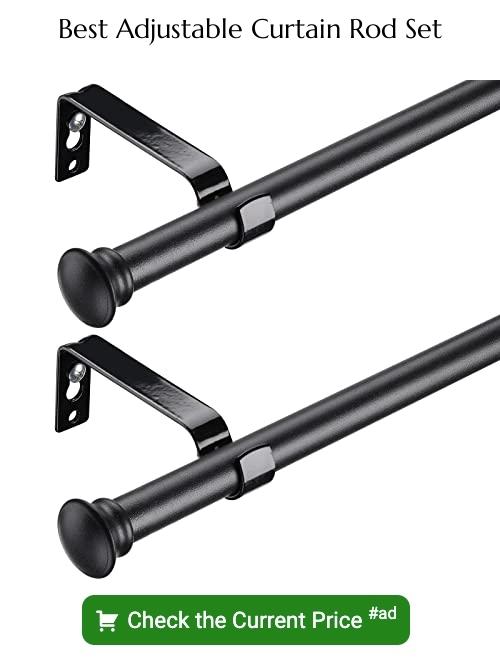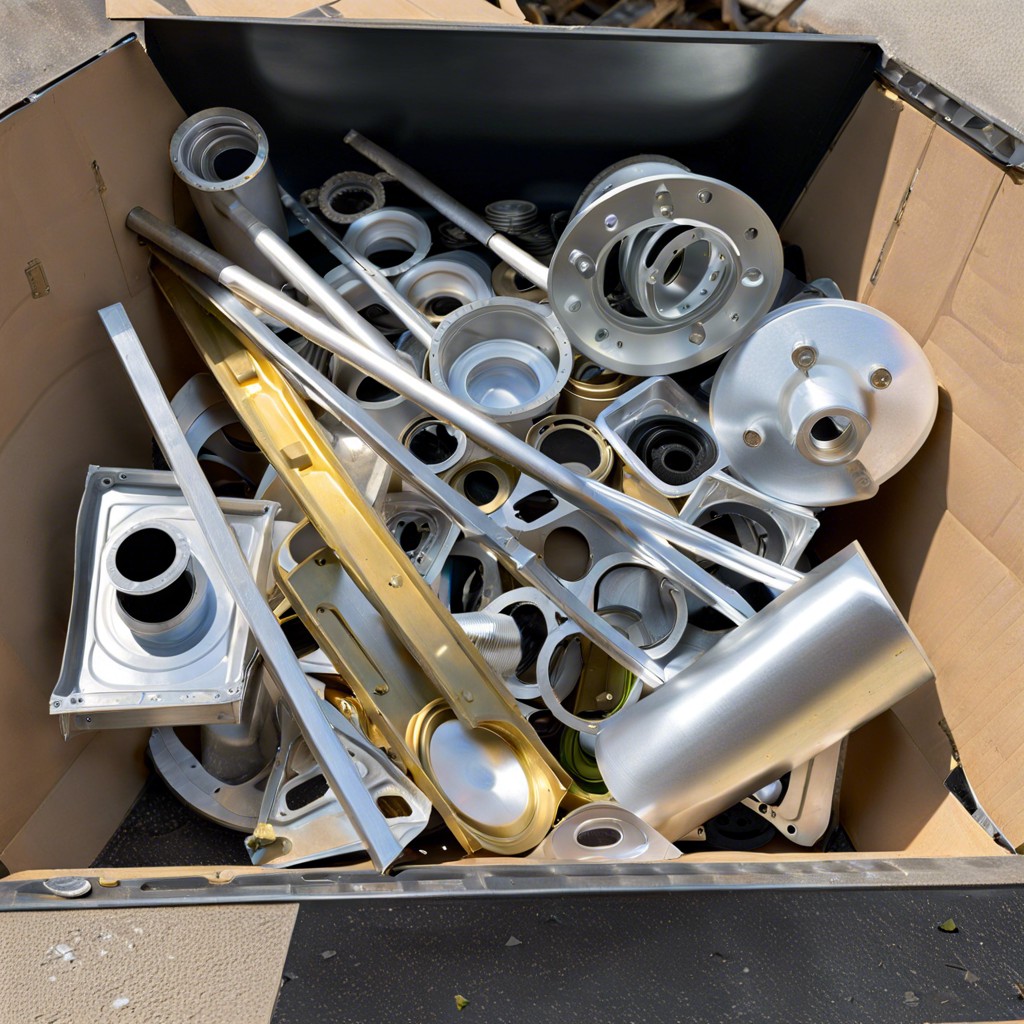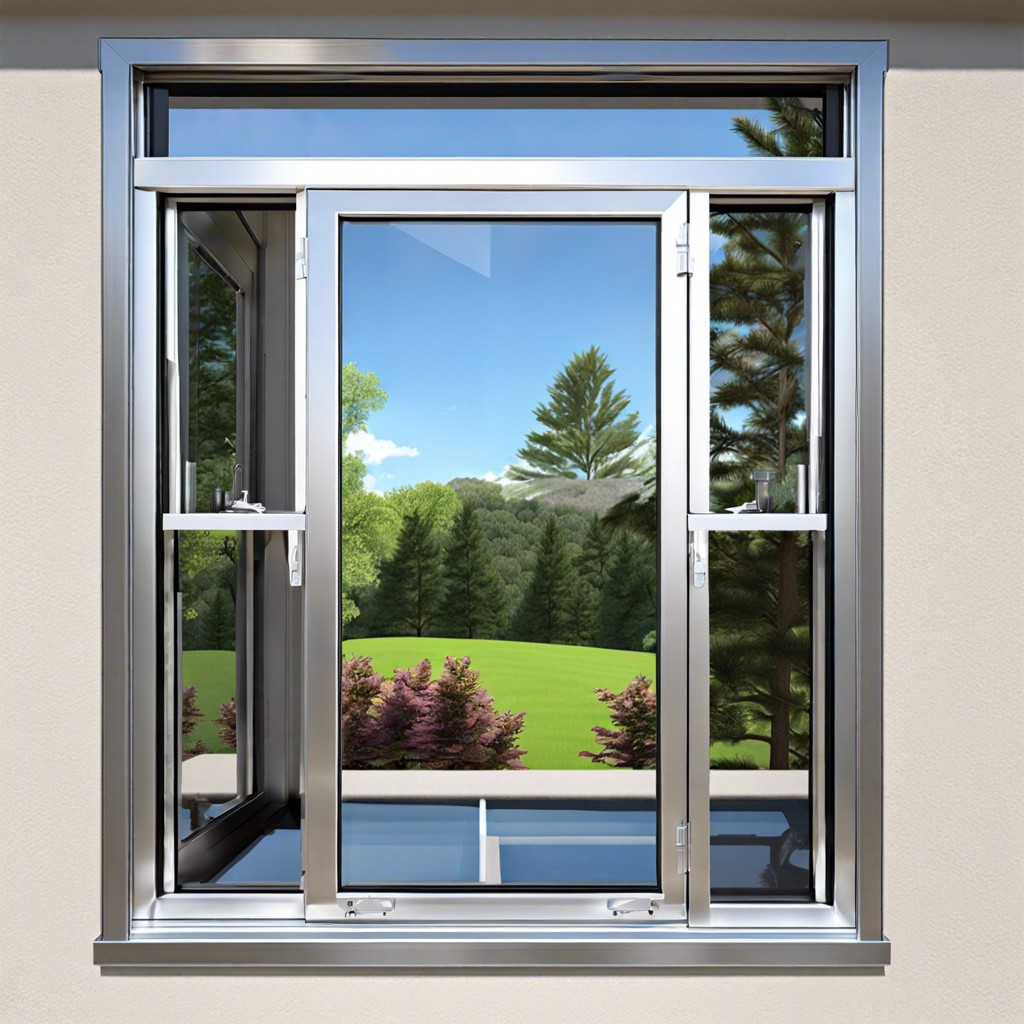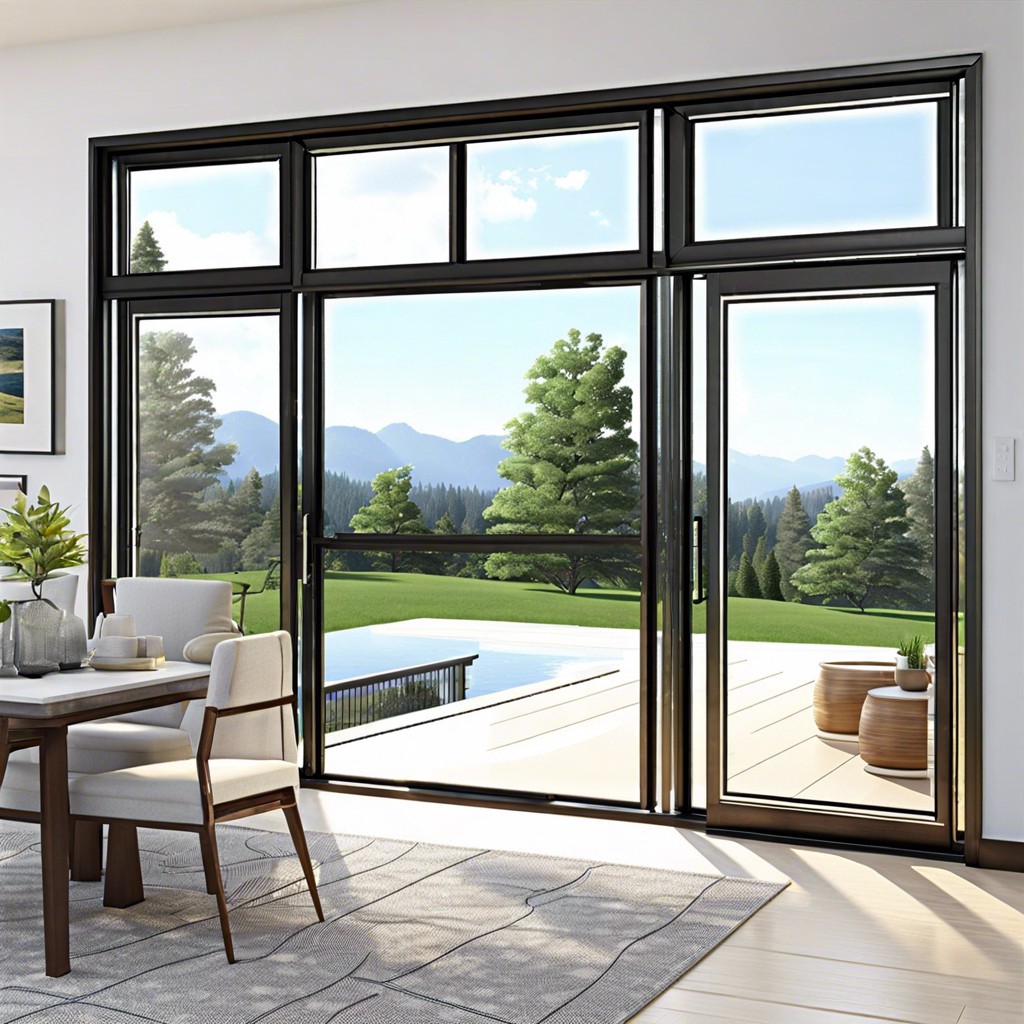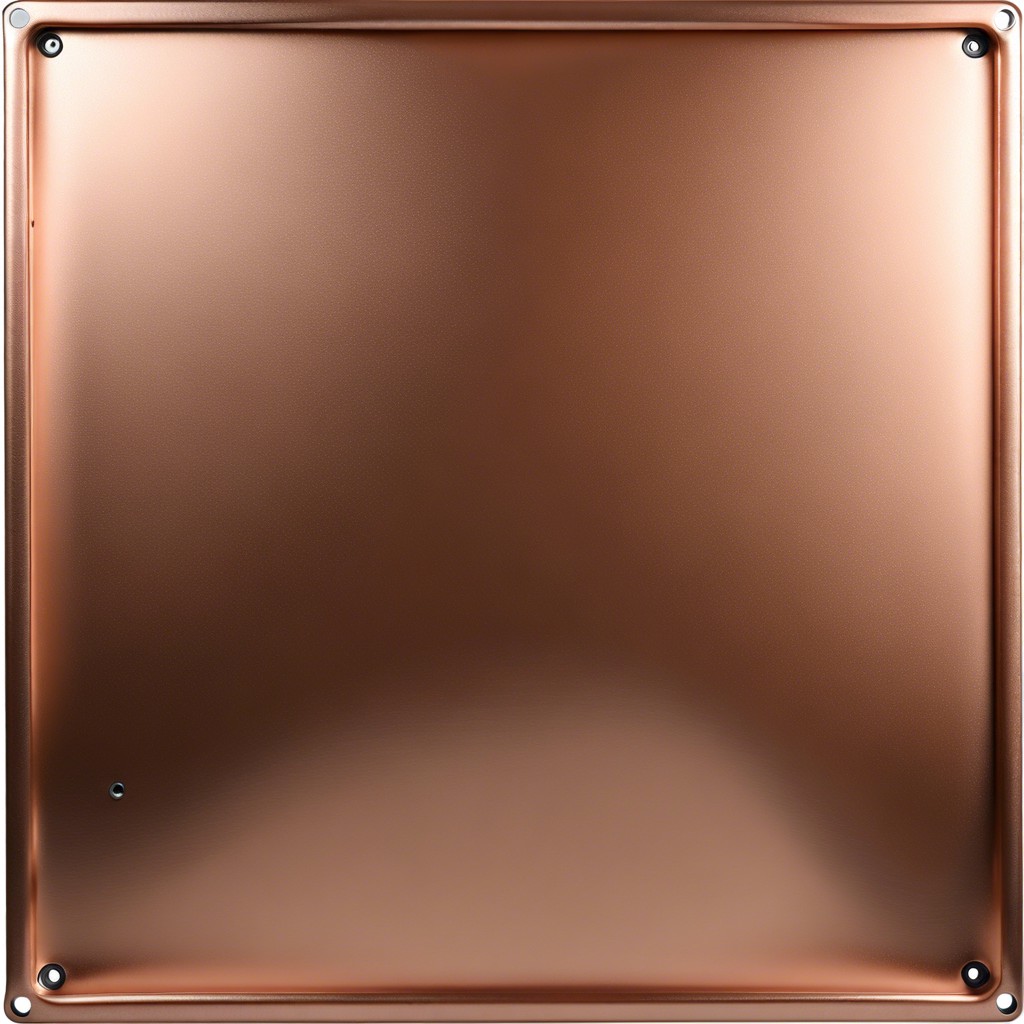Choosing the correct placement for curtain rods is vital because it can dramatically alter the appearance and lighting of any room – this guide will help ensure you get it right.
Key takeaways:
- Extending the curtain rod 6 to 12 inches past the window frame on each side is ideal.
- Larger extensions can enhance the grandeur of a room.
- Select a rod width that extends 6 to 8 inches beyond the window frame on each side.
- For larger windows or sliding doors, consider a wider extension, up to 12 inches.
- Extending the curtain rod by 6 to 12 inches past the window frame on each side creates a balanced look.
Ideal Curtain Rod Extension
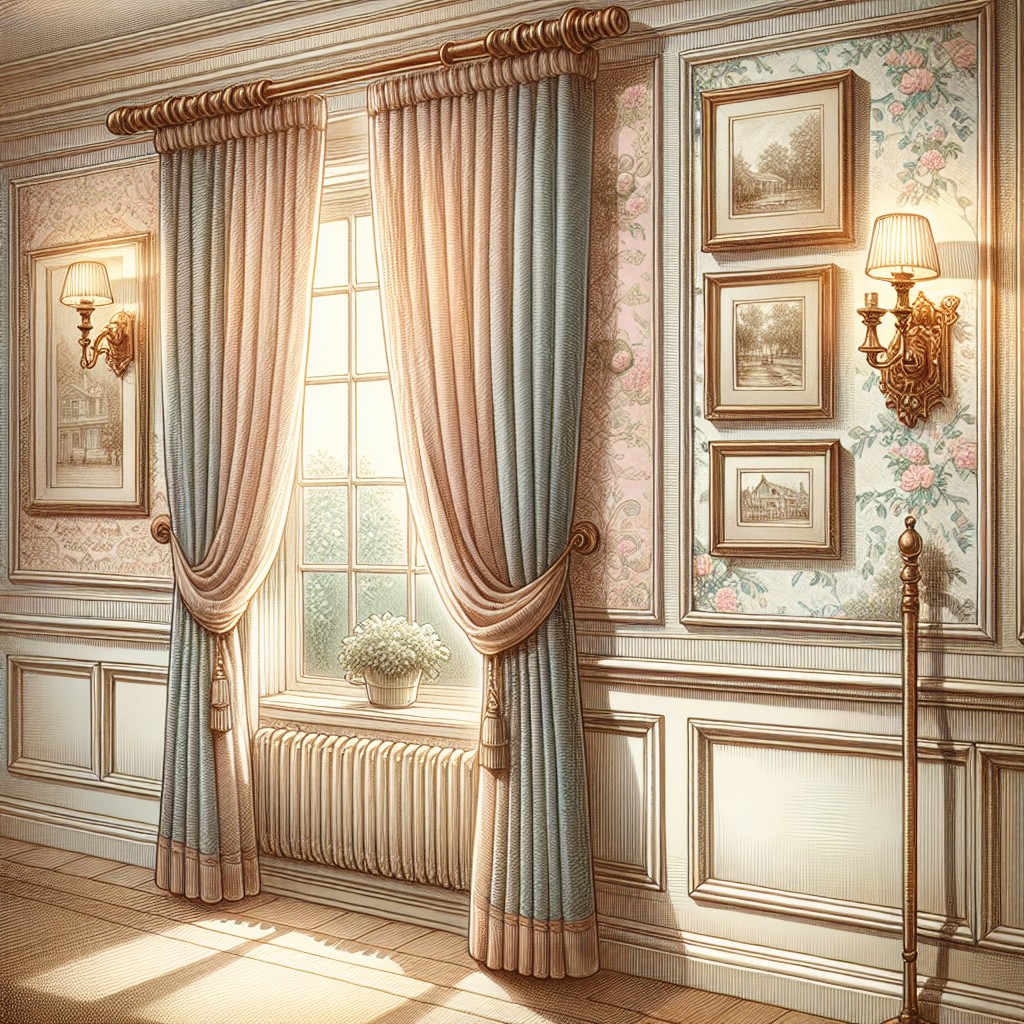
Extending the curtain rod 6 to 12 inches past the window frame on each side is ideal. This visually broadens the window, ensures curtains fully cover the window when open, and provides maximum natural light.
For a balanced look, maintain equal extension on both sides. When space is limited, a minimum extension of 3 to 4 inches may be necessary but aim for more when feasible. Larger extensions can enhance the grandeur of a room, but be mindful of adjacent walls or furniture that may limit the available space.
Determining the Best Rod Width

Selecting the appropriate rod width for your window is a key factor in achieving both aesthetic harmony and functional drapery. A general guideline is to extend the rod at least 6 to 8 inches beyond the window frame on each side. This allows enough space for your curtains to hang without blocking the window when open, maximizing natural light and providing an unobstructed view.
For larger windows or sliding doors, consider a wider extension, up to 12 inches, to keep the proportions balanced and maintain functionality. Additionally, a wider rod can help create the illusion of a grander window, enhancing the room’s design.
Remember to account for the additional width when purchasing your curtain rod to ensure a perfect fit. Always use a measuring tape for accuracy and check the manufacturer’s recommendations to guarantee the chosen rod can support the weight of your curtains.
Proportion to Window Width
The rule of thumb for achieving a balanced look is to extend the curtain rod by 6 to 12 inches past the window frame on each side. This proportion ensures that when the curtains are open, they won’t cover much of the window glass, maximizing natural light and providing a symmetrical appearance.
For wider windows, consider a larger extension to maintain the proportion and visual appeal. Remember that you may need extra rod length if your curtains have large, decorative panels to accommodate their full width without bunching when open.
Extending Beyond Window Frame
A general rule of thumb is to extend the curtain rod approximately 6 to 12 inches past each side of the window frame. This extension not only creates the illusion of wider windows, enhancing the room’s visual dimensions, but it also allows curtains to hang without obstructing the window when fully opened, maximizing natural light.
For windows flanked by walls or other obstructions, aim for at least 4 inches of rod on each side, if space permits. This provides enough room to accommodate the curtain panels without looking cramped.
In spacious rooms, with large walls around the windows, greater extension on each side can add an element of grandeur and can provide more flexibility in curtain selection.
Consider any nearby architectural features such as moldings or furniture that may affect how far you can extend the rod. Adapting the curtain rod’s length to accommodate these elements will ensure a seamless fit within the existing space.
Aesthetic Implications of Rod Placement
Extending the curtain rod 6-12 inches past the window frame can create a sense of width, making a window appear grander. This technique also allows curtains to rest against the wall rather than blocking the window when opened, maximizing natural light.
Conversely, rods that barely exceed the frame may make the window feel smaller and restrict light flow when the curtains are drawn. Consider the room’s decor; a minimalist approach might favor a sleek, barely-there extension, while a more traditional style could accommodate generous rod overhang, enhancing the room’s character.
The rod’s visual weight plays a part too; heavier-looking rods demand more space to avoid a cluttered look.
Functional Considerations for Rod Extension
When selecting the extent of your curtain rod beyond the window frame, consider the following:
- Allowance for Unobstructed Views: Extending the rod 6 to 10 inches past the window frame enables curtains to sit off to the side, offering clear views and maximizing natural light when open.
- Smooth Operation: A wider rod ensures that curtains can easily slide across, providing hassle-free opening and closing.
- Enhanced Insulation: A rod with sufficient extension reduces light gaps and increases coverage, potentially improving energy efficiency by limiting drafts.
- Room for Stacking Back: Heavier or thicker drapes require additional space on either side of the window to accommodate the gathered fabric without blocking the glass.
- Ensuring Symmetry: Ensure the rod extends the same distance on both sides for a balanced look, coordinating with room decor and maintaining the chosen design aesthetic.
Measure for Curtain Fullness
When measuring for curtain fullness, consider the following points:
- Curtain Width: Aim for curtains that are 2 to 2.5 times the width of the window. This ensures a pleasing full look when the curtains are closed.
- Stack Back: Account for space on either side of the window where the curtains rest when open, known as stack back. This space can affect the length of the rod needed.
- Fabric Weight: Heavier fabrics may require less fullness, while sheer curtains often look better with more fullness.
- Pleated Panels: If using pleated panels, the fullness is built in, so the width of the panel will more closely match the width of the window.
By considering these factors, you can ensure the curtains look proportional and function well when both open and closed.
Bracket Placement for Stability
When positioning brackets, ensure they are placed approximately 4 to 6 inches from the outside edge of the window frame to provide adequate support for the curtain rod. This placement prevents rod sagging and accommodates large, heavy draperies. For wider windows, consider installing a center bracket to distribute the weight evenly.
Use wall anchors if brackets cannot be secured directly into studs. The anchors will ensure your window treatments remain securely fastened to the wall even when drawn open and closed repeatedly.
Always check that the bracket is level before securing it. An uneven bracket can lead to an improperly hung curtain and uneven wear on fabric and rod.
By properly placing brackets, not only is stability achieved but curtains will drape beautifully, enhancing the window’s overall look.
Impact On Room Height Perception
Extending curtain rods beyond the window’s width can dramatically affect how we perceive the room’s height. By positioning rods closer to the ceiling and allowing curtains to hang fully to the floor, you create an illusion of taller windows, which, in turn, makes the ceiling appear higher than it actually is. This visual trick draws the eye upward and lends a lofty feel to the space.
Consider these points:
- Hang rods four to six inches above the window frame to maximize the heightening effect.
- Use elongated panels that reach the floor to emphasize vertical lines.
- For an even grander appearance, opt for a rod that runs almost the full length of the wall.
- Avoid heavy, horizontal patterns in your curtains that might counteract the desired vertical illusion.
Customizing to Window Types
Different window types can influence the extent to which you extend the curtain rod:
- Bay Windows: For bay windows, consider using a flexible curtain rod or individual rods for each section, extending 6-12 inches beyond the sides to enhance the unique shape without overwhelming it.
- Picture Windows: Large picture windows benefit from extended rods, sometimes up to 12 inches or more on each side, to allow curtains to clear the glass completely, maximizing the view and natural light when open.
- Double Windows: If dealing with double windows or a window wall, a single extended rod across all panes creates a unified look and allows independent curtain movement for each window.
- Casement Windows: With casement windows that open outward, ensure the rod extends enough to prevent the curtain from obstructing the window’s operation.
Adjust to each window’s needs, staying mindful of the curtain’s role in both form and function.
Optimal Length for Curtain Rods
To create a harmonious look and ensure functionality, aim for a curtain rod that extends approximately 6 to 12 inches past either side of the window frame. This additional length serves several purposes:
- It allows curtains to hang comfortably when fully open, maximizing natural light and providing an unobstructed view.
- Extending the rod past the window frame gives the illusion of a broader window, enhancing the visual size of the window.
- Proper rod length guarantees that curtains are not blocking part of the window when drawn, optimizing both aesthetic appeal and the entry of sunlight.
Measure the space above and beside your windows to ensure there’s enough room for the desired extension, and consider the curtain stack-back—the width of the curtain when open—which varies depending on curtain thickness and type.
Privacy and Light Control With Rod Extension
Extending your curtain rod beyond the window frame significantly enhances both privacy and light control. Here’s how:
- Wider Coverage: A rod that stretches past the window ensures curtains overlap the wall, thus blocking sight lines from outside and safeguarding your privacy.
- Improved Light Blocking: The extra width allows curtains to cover the window entirely, preventing light from creeping in at the edges.
- Versatility in Function: This setup gives you the flexibility to draw curtains completely away from the window during the day for maximum light exposure and close them for privacy as needed.
- Seamless Look: When curtains are open, the additional rod length keeps them from blocking any part of the window, maintaining the view and natural light.
Remember, the key to achieving both privacy and optimal light control lies in allowing your curtains to move freely along the extended rod.
Influence of Curtain Length On Rod Positioning
The length of your curtains plays a crucial role in where you position your curtain rod. Here are some points to keep in mind:
- Floor-length curtains typically require the rod to be positioned higher above the window, creating the illusion of taller windows and a more elegant look.
- For curtains that just brush the floor or hover half an inch above, the rod should be placed so that the fabric falls gracefully without bunching on the floor.
- Sill-length curtains lend themselves to a rod placement right above the window frame, aligning neatly with the bottom of the sill for a tailored finish.
- If you’re using apron-length curtains, the rod should be fixed a few inches below the top of the window frame, allowing the drapery to cover the lower part of the wall and enhance privacy.
- Café curtains, which cover only the bottom half of the window, require the rod to be positioned at the window’s center point or at the level where you want the curtain to split the window.
- Remember to adjust the rod height for tie-top or tab-top curtains, which require extra space above the rod to accommodate their design.
Keep these guidelines in mind to achieve a polished look that complements your curtains’ length and style.
How to Hang Curtains
Begin by measuring the desired length from the window frame to where you want the curtains to hang, considering the recommended 6-8 inches to either side of the window for ideal fullness. Mark the spots for the curtain rod brackets, ensuring they are level.
Use a drill to make pilot holes at the marked spots. If you encounter a stud, drive the screws directly into the wood. If not, use wall anchors to secure the brackets.
With the brackets installed, slide the curtains onto the rod. Before placing the rod on the brackets, ensure curtain panels are evenly distributed.
Once the rod with curtains is resting securely on the brackets, make final adjustments. This may include spacing the panels and setting any folds or pleats for a polished look.
For a finishing touch, consider adding holdbacks or tiebacks. These not only add decorative flair but also can be used to control the amount of light entering the room and enhance the perceived height of the window.
FAQ
How far should a curtain rod extend past a window?
A curtain rod should extend 8 to 12 inches past the window’s width, providing an allowance of 4 to 6 inches on each side.
How much space should be on either side of a window for a curtain rod?
A curtain rod should extend three to four inches from each side of the window frame.
How far past the window sill should curtains hang?
Curtains should hang long enough to touch the floor or sill, with an additional few inches to create a subtle puddle effect.
Are curtains supposed to be longer than the window?
Yes, for a full window treatment look, curtains are typically designed to be one-and-a-half to two times the width of the window.
What is the optimal width for curtain rods in relation to window size?
The optimal width for curtain rods should be 8-12 inches wider than the window frame to allow enough space for curtains to stack on either side when opened.
When should curtains hang to the floor versus the window sill?
Curtains should hang to the floor in formal spaces for a more polished look, while they should hang to the window sill in casual areas for a practical and clean design.
How does the type of curtain affect the placement of the rod outside the window frame?
The type of curtain affects the placement of the rod outside the window frame by determining how high or wide the rod should be set, with heavier, more decorative curtains requiring rods set higher and wider, while lightweight, airy curtains can have rods set closer to the window frame.
Recap
